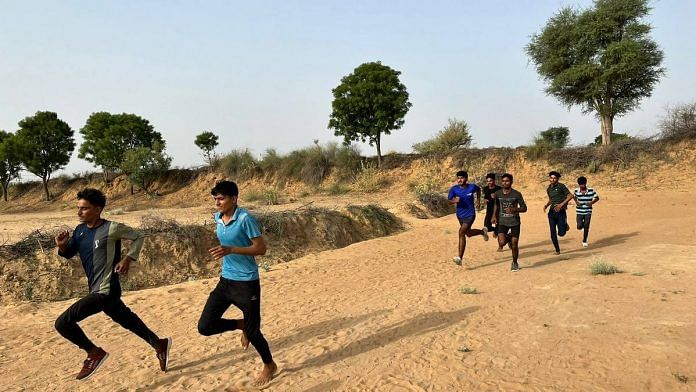Sikar/Nagaur/Jhunjhunu: “Up-down-UP! Up-down-UP!” Manoj Khichar bellows. At 22, the Jat Regiment aspirant is ‘overage’ for army recruitment but years of preparation have made him enough of a veteran to act as drill sergeant. Twenty younger men, all between 18 and 20 years old, follow his every command at the vast muddy ground in Didwana tehsil of Rajasthan’s Nagaur district.
For the next two hours on 4 May, until the 5 am breeze turns into gusts of hot wind, the toned and tanned youth run with tyres around their neck and climb ropes tied to khejri trees.
“Army ke alawa koi option hi nahi hai (There is no option other than the army),” 18-year-old Virender Manda says, anxiety tensing his face when he thinks about the future.
“I’ve got three years to prove my mettle. If I don’t get a job in the Army, my chances of living with dignity in my society are very low. My chances of marrying go down. People will mock me at every function,” he explains.
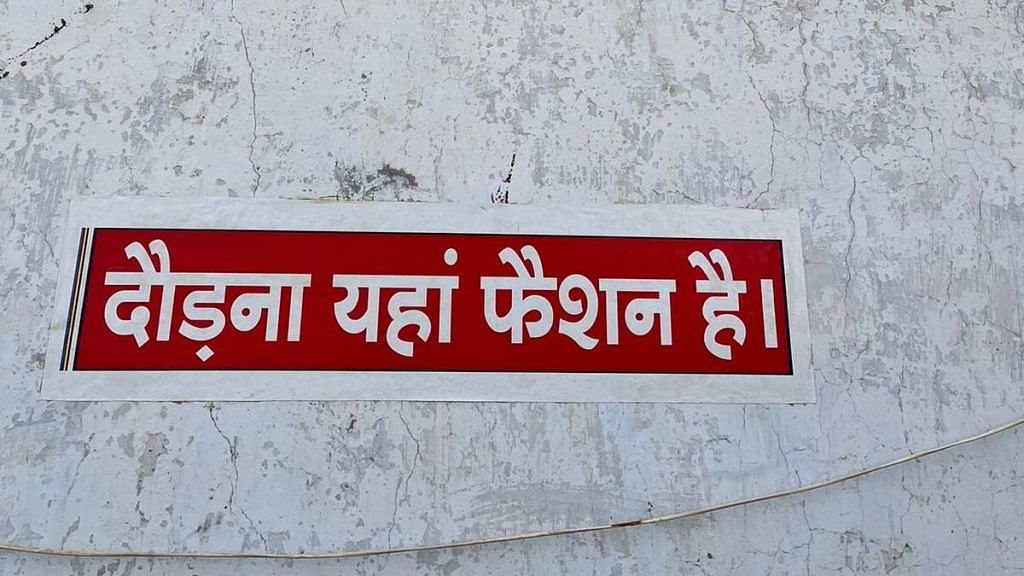
He follows the same routine every day: Wake up at 4 am, cycle 25 km from the village to Didwana ground, do drills, run, and sleep by 11.
Hundreds of men like Manoj and Virender can be seen across the villages, blocks, and districts in the Jat-dominated belts of Rajasthan and Haryana, famous for producing soldiers and “martyrs”. Day and night, they run with a single mission — to join the Indian Army as jawans.
For many, it’s a losing race.
Due to Covid, there have been no recruitments in the non-officer ranks for the last two years. As a result, many ‘boys’ are getting too old to meet the strict age eligibility requirements: 17 to 21 years.
We are average, some admit, which is how they pronounce ‘overage’— but they still keep running, because there is nothing else to do, no other jobs to chase.
ThePrint travelled to three military-obsessed districts of Rajasthan — Sikar and Jhunjhunu in Shekhawati and Nagaur in the adjoining Marwar region — to meet with these “overage boys” and to visit some of the many ‘defence academies’ here that keep the josh (enthusiasm) of joining the army alive.
Also Read: ‘Running Boy’ Pradeep Mehra’s overnight fame shows India’s obsession with merit and success
Protests, a viral video, and a suicide note
In a written reply in the Rajya Sabha in March, Minister of State for Defence, Ajay Bhatt, had acknowledged that in 2020-21, that only 47 recruitment rallies out of the planned 97 had taken place. Out of these, only four saw common entrance exams (CEEs) being conducted before recruitments were suspended. The irony is that there is a serious shortage of personnel across the military— as of December last year, 1,04,053 in the Army, 12,431 in the Navy, and 5,471 in the Air Force.
Meanwhile, lakhs of army aspirants are getting restless. Earlier this month, #JusticeForDefenceStudents trended on social media, and saw a surfeit of posts raging at the central government for delaying Army recruitments. On 8 May, agitations over the same issue broke out in Haryana as well.
Last month, too, during the Parliament session, many overage boys from Shekhawati and other parts of the country marched to Delhi to protest against the Narendra Modi government for delaying Army recruitments and to demand an extension of the age limit.
One of them, Suresh Bhinchar, even ran from Sikar to Delhi in the scorching heat, covering 350 kilometres in 50 hours. He managed to meet Hanuman Beniwal, MP from Nagaur, to raise the overage issue.
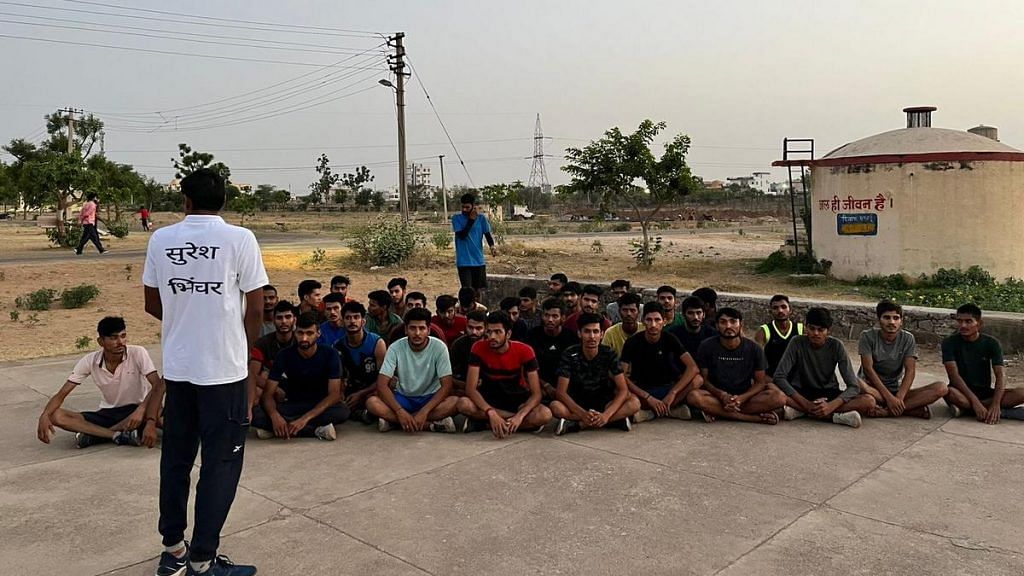
To many, the endless perseverance of army aspirants is “inspirational”, thanks to viral videos like that of the smiling “midnight runner” Pradeep Mehra. The 19-year-old McDonald’s employee was captured on camera, jogging 10km home to Noida to stay in shape for military recruitment.
'I am practicing to get into the Indian Army. I run 10 km every day. My mother is getting treatment at a hospital in Delhi. People are getting motivated seeing my video,’ said 19-year-old 'midnight runner' Pradeep Mehra. https://t.co/5n9ARx97j5
— ThePrintIndia (@ThePrintIndia) March 21, 2022
What few know is that tens of thousands of other young men in rural India also run day and night for the same reason.
Then there are the tragedies, like 23-year-old Pawan Panghal from Haryana’s Bhiwani district. Depressed about recruitments not taking place, he hanged himself in April at the tracks where he would practice running. His suicide note was reportedly written on the ground: “Bapu, is janam me nahi ban saka, agla janam liya to fauji jaroor banunga (Father, I could not become a soldier in this lifetime, but I will definitely become one in the next)”.
However, between the “motivational” stories and tragedies is the reality that for men in some parts of the country, getting into the Army is not just about “serving the country” or having a steady job, but a test of their masculinity and honour.
As children, they are told tales about the valour of their ancestors, shrines to whom dot the dusty lanes. And as they grow into their teens, they set their sights not on distant colleges but on the dozens of homegrown military academies in their backyards.
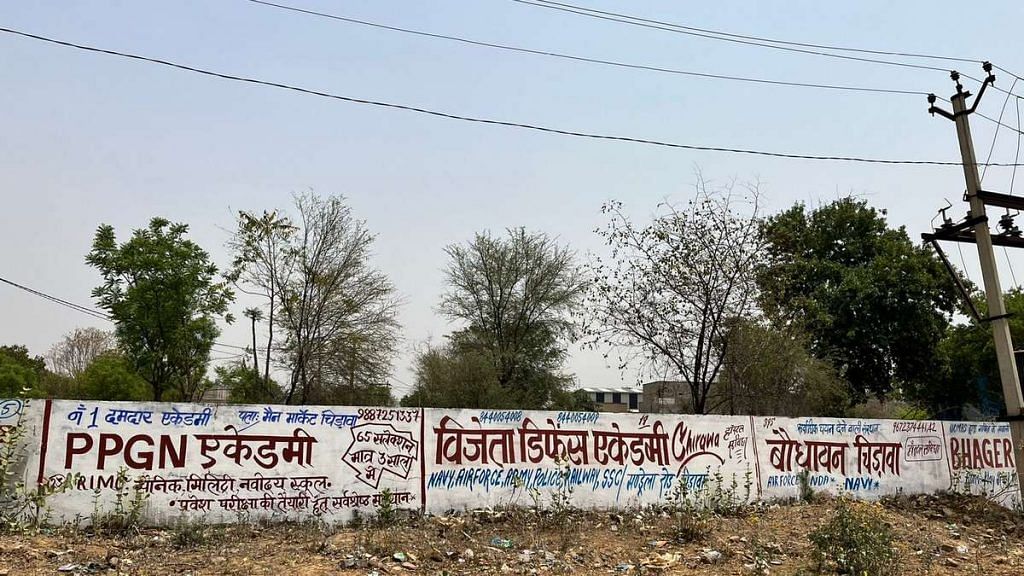
The ‘defence economy’ of rural Rajasthan
Those who can’t, teach. This dictum holds true in Shekhawati and Nagaur too. Many army aspirants who aged out or couldn’t get through for other reasons open their own ‘academies’ to train a never-ending supply of new hopefuls.
In Didwana tehsil alone, where ThePrint met Manoj Khichar and his students, there are more than 15 such academies promising success in the Army, Air Force, Navy — although the Army by far holds the greatest appeal here.
Manoj is employed at Defence Academy, which was opened a year ago by a former Army aspirant and now “overage” Mukesh Khichar, 25.
Inside the academy, there are inspirational posters, many featuring former Armyman and track star Milkha Singh. “Daudna yahan fashion hai (Running is the fashion here)” says one; “1,600-metre daud 4.50 minute main poora karma hi mera sapna hai (My only dream is to complete 1,600 metres in 4.50 minutes)” says another. “Jai Milkha, Tay Milkha” proclaims a third.
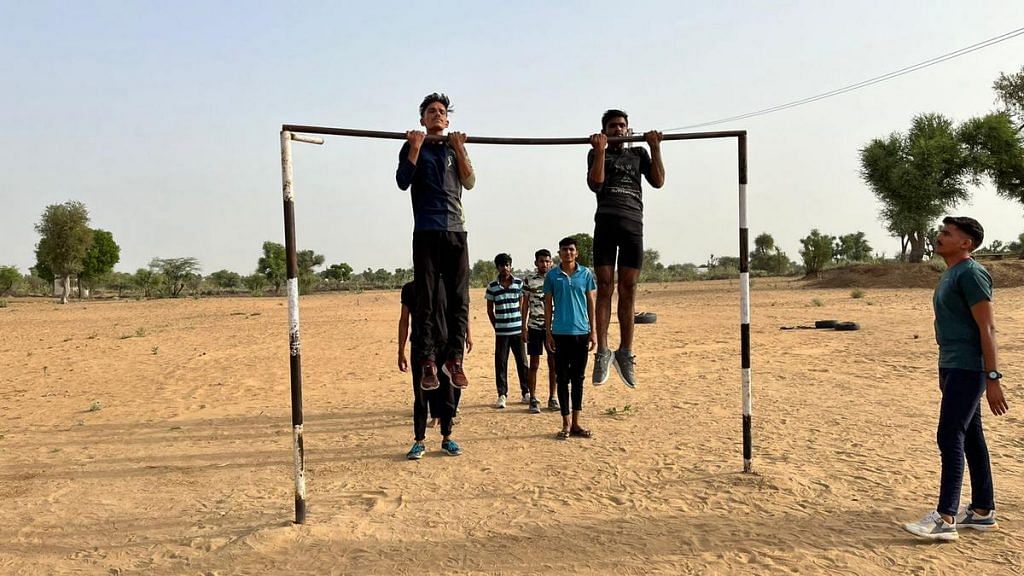
Many such academies have names that invoke military grandeur— Lakshya (Aim), Vijeta (Victor), Colonel — while others signify progress in more generic terms, like Bloom.
Many farming families send their sons, some as young as 16, to such academies to train so they can compete with thousands of others. Some students travel daily from their villages, while others avail of boarding facilities.
The curriculum at these institutes includes rigorous physical exercises as well as training for written exams, with monthly fees ranging from Rs 4,000 to 6,000, inclusive of accommodation and food.
The faculty often includes retired soldiers who sometimes volunteer to train the boys as a way of passing the time. For academics, usually limited to maths and general knowledge, teachers are hired from the cities.
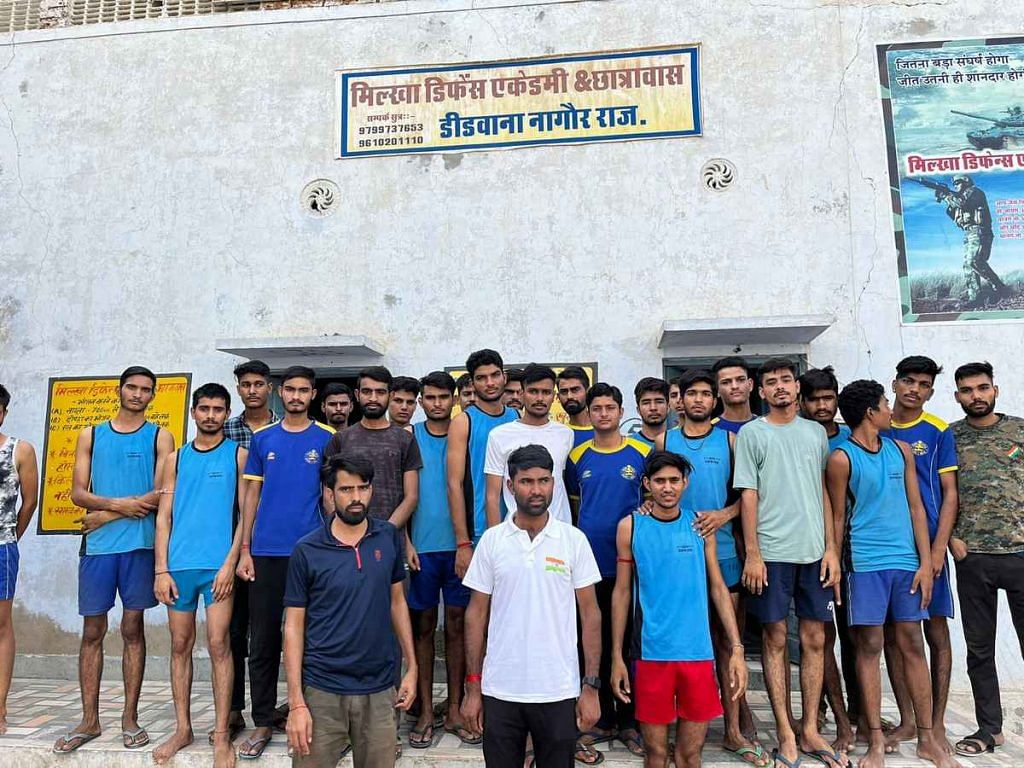
Shame, shaadi, and an ‘average’ life
The Army has traditionally been one of the most important employers for men in this part of Rajasthan, but now the legacy and prestige of this is weighing heavily on the shoulders of overage boys who fear they may never live up to the same standard as the men before them.
It’s no different at Chhoti Beri village in Nagaur where every other facility is connected with preparing for the Army.
“The running tracks, the volleyball and football play grounds, the gym and trainers available in the neighbourhood… this is all part of the fauji dream that the boys are fed since childhood,” retired Army man Amjad Fauji says.
He and other retired soldiers like him are worried that the entire culture of the village is under threat with recruitments being paused, and are mobilising the youth to launch protests and social media trends to bring the issue to the political forefront.
With a population of 12,000, the village is home to 70 serving and 250 retired soldiers. Another 150 or so youth, some still in school, are currently preparing to enter the Army. But there is a black mark for many villagers: the 50 or so boys who became overage in the last two years.
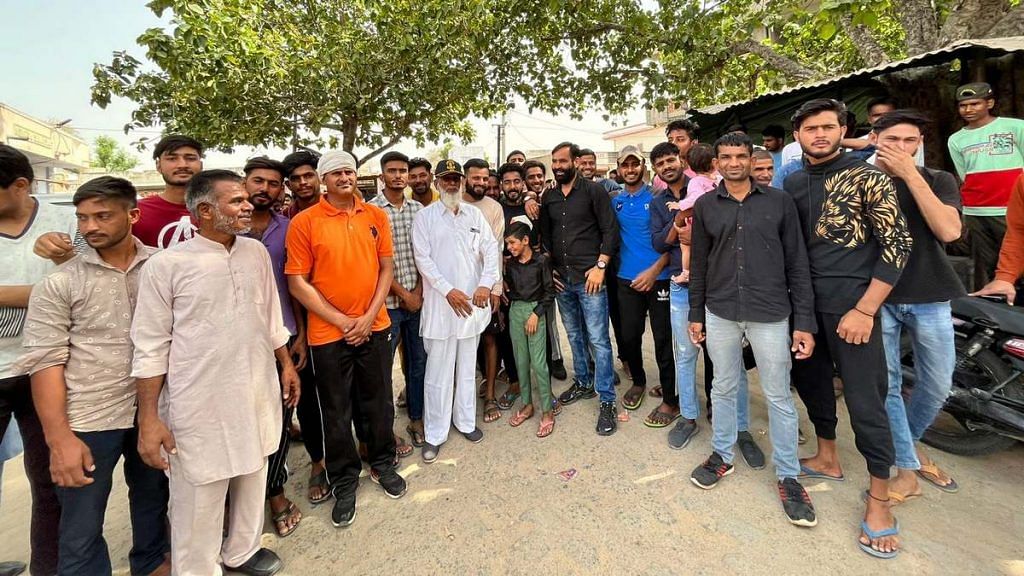
Village head Iqbal Khan’s four sons are now overage too, a source of anger and shame for him. “I’m very frustrated,” Khan thundered, adding that he blames the central government.
A few houses away from the headman’s office lives 92-year-old Umaid Khan, who was a member of the 4 Grenadiers Regiment and served in the 1962 and 1965 wars with China and Pakistan respectively.
His sons, too, have served in the Army, and the family has always been proud of their great legacy of serving the nation.
However, Umaid’s grandson, 21-year-old Mohmmad Farooq, has exhausted his three “golden” years. “I don’t think I have a chance now,” he told ThePrint, his face small.
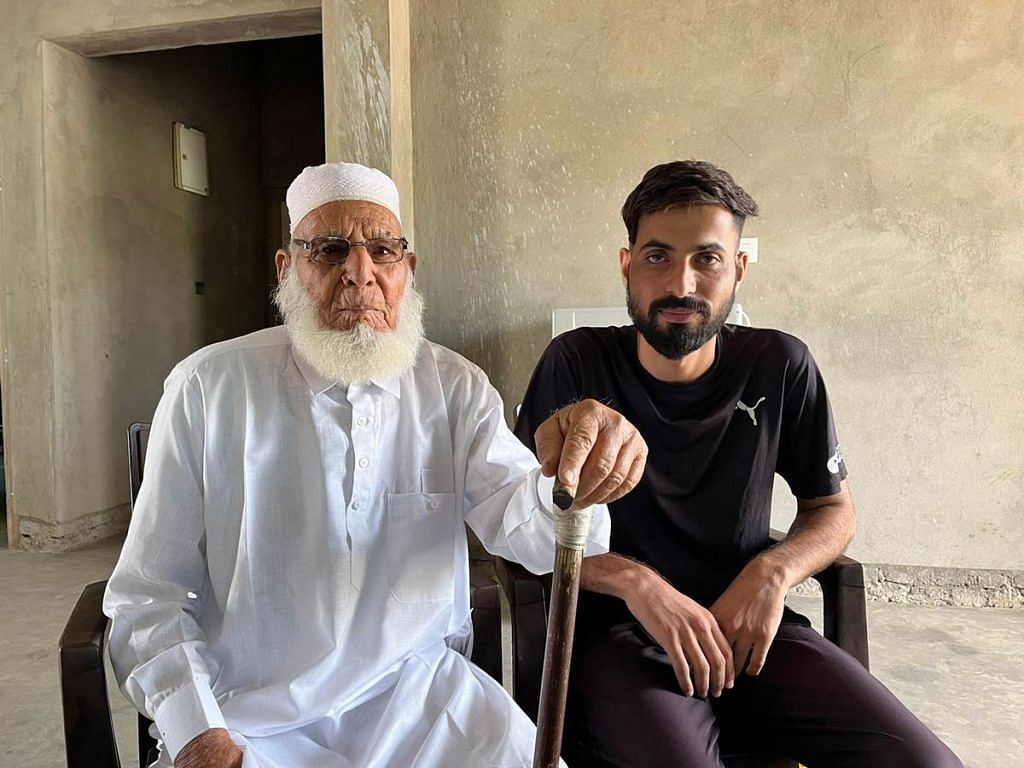
Pointing out that everyone pronounces ‘overage’ as ‘average’ here, Amjad Fauji quips: “Isn’t it true that these overage boys are going to lead an average life? So maybe the term rightfully describes their future.”
Legacy and employment are two big worries, but so is marriage for these boys who are past their Army shelf life.
“No one marries their daughters to unemployed sons,” Mahesh Sahu, 20, says. He is on the verge of tipping over into the overage category and worries about being able to have a woman marry him. In local functions, overage boys are also sidelined, he adds.
The social ramifications are even deeper. In this part of Rajasthan, the age-old custom of “aata-saata”, which started due to the low sex ratio (928: 1000, according to the 2011 census), has made a comeback. In this system, a family agrees to ‘give’ their daughter in marriage only if the groom’s kin can send another bride for them in return. If he’s part of this kind of package deal, an overage boy may attract a bride.
The system in Haryana is more blatant: middlemen arrange wives — described as “mol ki bahuen” (bought daughters-in-law) — for overage boys for a price.
Also Read: #GenerationNowhere: India’s young are fighting an invisible epidemic, smartphone addiction
At present, Mukesh Sahu is giving his all to training at a defence academy, although like many others he is also trying to get a BA through distance learning. He doesn’t have much of a plan B when asked what he will do if he doesn’t get into the Army.
“I’ll kill myself, what else can I do?” he says. “We are seven brothers and my father only owns 15 bigha agricultural land. I will only inherit a bigha or two. You tell me if I have a prosperous future?”
(Edited by Asavari Singh)



